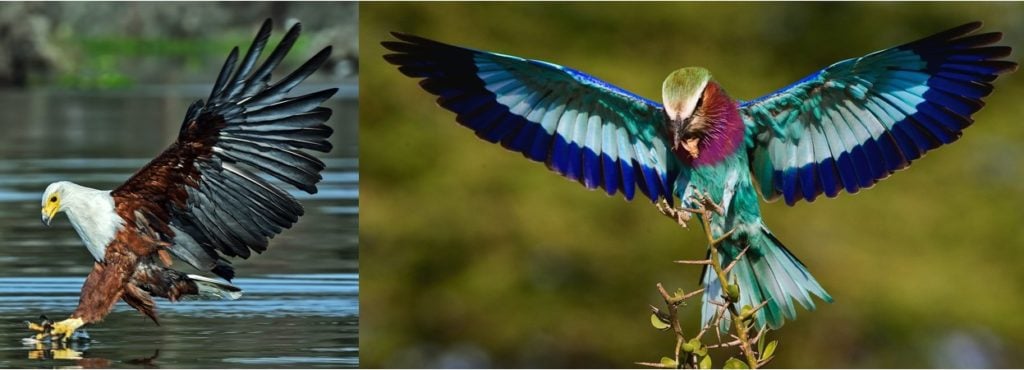2 COMMON Birds Found in Western Sahara! (2025)
Are you trying to identify a bird found in Western Sahara?

Some of the wildest and most colorful birds you could imagine are found here. From gigantic, flightless birds to colorful showstoppers, there’s something to catch everyone’s attention!
Due to the sheer number of species, there was no way to include every bird in Western Sahara in this article. So instead, I tried to focus on the birds that are most regularly seen and observed.
2 COMMON types of birds in Western Sahara!
#1. Common Hoopoe
- Upupa epops

Identifying Characteristics:
- Adults are 25–32 cm (9.8–12.6 in) long with a wingspan of 44–48 cm (17–19 in).
- Its coloring is cinnamon-brown on the head and body, with black and white barred wings.
- The head is adorned with a crest of brown feathers tipped in black.
Look for the Common Hoopoe in rural gardens, cities, plantations, savannas, and grasslands. They often spend time near piles of rotting leaves or a fallen log where insects, grubs, and worms will use it as a habitat. It’s like a buffet for the Hoopoe!
This unusual-looking bird has a variety of defensive tactics. Its movable crest is used for advertising and intimidating potential predators and rival Hoopoes. If that doesn’t work, this species is ready for a fight! They use their strong head and neck muscles to gouge their long, pointed beaks into opponents’ eyes, which can blind them.
In addition to their fighting skill and intimidating looks, they produce a substance that smells of rotting meat. They cover themselves and their eggs with the substance to warn away predators. Nestlings even have their own scent gland that makes them unappetizing to predators.
#2. White-Throated Bee Eater
- Merops albicollis

Identifying Characteristics:
- Adults are 19–21 cm (7.5-8.5 in) long, with males gaining an additional 12 cm (5 in) from their tail streamers.
- Look for this species’ white throat and white eyebrow on either side of its black eye stripe to differentiate it from other Bee Eaters.
- Their coloring is bright green to white on the belly with a pale blue rump, a black collar underlined in turquoise, and bright yellow-orange on the back of the head.
White-throated Bee Eaters congregate in large groups, which protects them from predators. They also raise their young communally, sharing the duties of protecting nests and bringing food to nestlings.
Like others of their family, White-throated Bee Eaters eat hornets, wasps, and bees, catching them in mid-flight by leaping from a low perch. Before they eat them, however, they remove their prey’s stinger by jamming it into a hard surface several times to extract it. That’s a straightforward way to make sure your meal is safe to eat!
This species has a dry, high-pitched, rattling call.

Do you need help identifying birds in Africa?
These books will provide you with much more information!
Which of these birds in Western Sahara have you seen before?
Leave a comment below!



